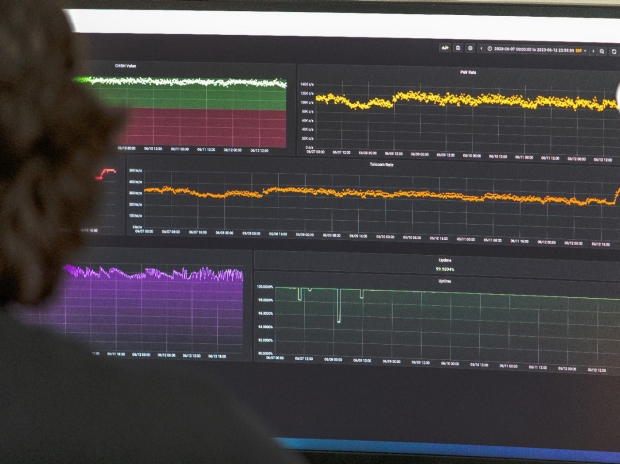Insider Brief
- NYU and Qunnect sent quantum information through standard telecom fiber in New York City.
- The team used Qunnect’s quantum-secure networking technology.
- Critical Quote: “This foundational achievement will pave the way for future expansion of an underground, high-capacity fiber optic network connecting NYU with New York City’s other institutions, including financial and banking centers and technology companies, through quantum communication and computing.” — Stacie Grossman Bloom, NYU’s vice provost for research and chief research officer.
- Photo credit: David Song/New York University.
PRESS RELEASE — New York University and Qunnect announced the successful test of a 10-mile (16-km) quantum networking link between the Brooklyn Navy Yard and NYU’s campus in Manhattan. This technical milestone signifies a breakthrough that advances the next generation of networking protocols for quantum communication and opens the door for financial services, critical infrastructure, and telecom companies in the New York metropolitan area to pilot quantum networking technologies.
“This foundational achievement will pave the way for future expansion of an underground, high-capacity fiber optic network connecting NYU with New York City’s other institutions, including financial and banking centers and technology companies, through quantum communication and computing,” says Stacie Grossman Bloom, NYU’s vice provost for research and chief research officer.
During this test, Qunnect, a leader in quantum-secure networking technology, and NYU’s Center for Quantum Information Physics (CQIP) transmitted highly entangled photonic quantum bits, more commonly referred to as “qubits,” at a rate of 15,000 pairs/second over fiber optic cable with 99% uptime. The fragile nature of entanglement requires rigorous monitoring and precision, and previous demonstrations had shown only short durations in which the quantum network was fully operational. The work was conducted on Qunnect’s GothamQ, a quantum network utilizing existing commercial fiber optic cable, with a node that connects to NYU’s Lower Manhattan campus.

“This test represents the next step in building a quantum network that engages clients in critical industries that need to future-proof their security,” says Noel Goddard, CEO of Qunnect. “In demonstrating sustained delivery of high-quality entangled qubits over 10 miles of real fiber, we have validated GothamQ as the country’s first commercial metropolitan network supporting entanglement distribution networking protocols with hardware that is ready to be deployed today.”
“With the purity produced by our entanglement sources and the automation of our controlling and monitoring systems, the roadmap for scaling from two nodes towards a full metropolitan network in cities around the world has become much clearer,” adds Mehdi Namazi, chief science officer of Qunnect.
Quantum networks will dramatically enhance the security of data transmission as it relates to capabilities including communications, computing, and cybersecurity. Qunnect’s particular approach to quantum networking also enables easy detection of and protection against network tapping.
NYU has emerged as a trailblazer in quantum science and technology, with research spanning quantum phenomena, quantum information theory, communication, computing, materials, and optics. With the successful test of this dark fiber infrastructure, the university is positioned to be a pioneer in the creation of a quantum hub in Lower Manhattan, with plans to expand a network to different campus sites.
“Our quantum program follows bold and ambitious goals to go beyond incremental progress and focus on groundbreaking longer-term impact,” says NYU Physics Professor Javad Shabani, director of the Center for Quantum Information Physics (CQIP), which is working to advance quantum information science and its applications. “We need to think about scalable quantum technologies that can communicate with each other very much like the internet connecting desktop computers. Our work shows the welcoming opportunity that our quantum setups can become distributed and maintain their ‘quantumness’ from Brooklyn to Manhattan.”
NYU’s CQIP is also partnering with IBM to train NYU undergraduate and graduate students in quantum information physics, complemented by a collaboration with the IBM Q Hub and the Air Force Research Lab to advance quantum research and education.
The Navy Yard is also home to a research and production facility run by NYU’s Tandon School of Engineering (NYU Tandon @ The Yard) that focuses on emerging media technologies. In April, Qunnect announced the expansion of its facilities in the Brooklyn Navy Yard. Its R & D facility and network research hub are dedicated to developing cutting-edge networking technology for commercial use.
For more market insights, check out our latest quantum computing news here.

















